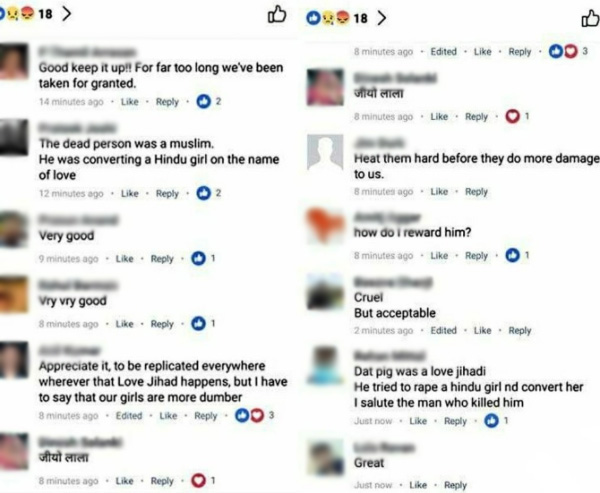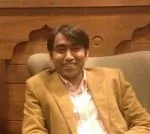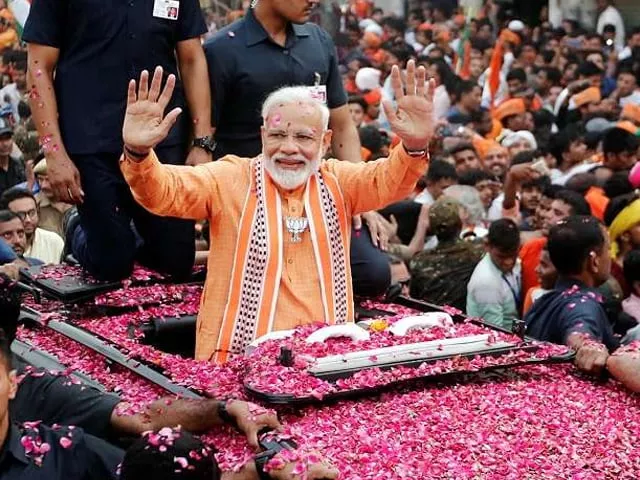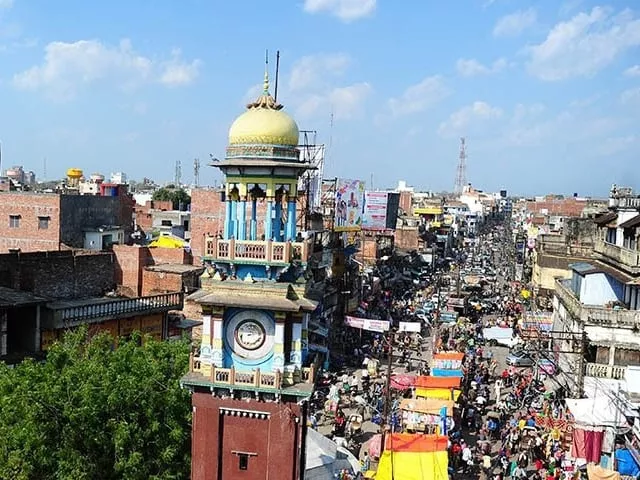
Many of them praised the killer for avenging the perpetrators of love jihad. PHOTO: SCREENSHOT
Of Afrazul’s brutal murder and India’s love(less) jihad
For intellectuals, it's easy to reject love jihad as a figment of imagination or political tool but it's a real threat
The brutal murder of Muhammad Afrazul in Rajasthan has left everyone aghast and shocked. Washington-based Baloch activist, Ahmar Mustikhan, writes,
“My head is bowed in shame as a defender of Hinduism as a humanist faith and an Indophile. I am speechless and very angry.”
He has compared the killer Shambhu Lal to the Muslim killers Michael Adebolajo and Michael Adebowale who hacked an off-duty fusilier, Lee Rigby, with a knife and cleaver in London, putting the debate in an altogether different category. After this, one feels the urge to look for a suitable nomenclature for an extremism-like phenomenon in Hinduism. Huffington Post quotes the daughter of the victim,
“They butchered my father like an animal.”
The New York Times prefers a simple, yet provocative headline, “Hindu man in India kills a Muslim and posts a video”.
When I confronted the common folk, I came across very strange sentiments. Broadly speaking, the common masses – Hindi-speaking or even English-speaking folk far away from the elitist, anglicised and liberal corridors of the Oxbridge and Ivy-league world – reacted in a very uncomfortable and unacceptable manner. Many of them praised the killer for avenging the perpetrators of love jihad and felt that the time had come for Hindus to take violent revenge for the supposed atrocities committed by Muslims of the last 1,000 years.
And if you think I am exaggerating in the least bit, one glance at the social media outburst would be sufficient to confirm these observations.
https://twitter.com/apatra861/status/938790465528152066
 Photo: Twitter/bullet_bhavitra
Photo: Twitter/bullet_bhavitraThe more sensible and thoughtful ones condemned the murder but added a qualifier to it. They called out the intellectuals and the media for being selective in their outrage such that when such brutalities are faced by Hindus, Jains and Sikhs, one does not come across such a harsh reaction by them. They questioned the media’s silence when a professor’s hands were chopped-off, numerous RSS workers were brutally murdered in Kerala, and Paresh Mesta’s private part was chopped off and face burnt in boiling water by Muslims. They complain that in the cases when the majority community faces such brutality at the hands of Muslims, the liberal cabal does not see the element of religious hatred, and if anyone even brings forth the role of Muslims, they are accused of giving the issue “a communal colour”.
Every time India reaches a notch higher in global barbarity index with such incidents, it all turns into a sleazy polarisation of Hindus versus Muslims. Even the lip service of condemning such despicable incidents does not remain an honest exercise. Right-wing political parties and cultural groups start complaining of liberal hypocrisy for their selective outrage and immediately start extolling Hindu sentiments, going back to the history of the last 1,000 years. Bulk WhatsApp messages appealing to the nationalist-cum-religious sentiments of the common folks are circulated, resulting in sporadic incidents of violence.
Political parties like Congress, a bunch of moth-eaten socialist and communist parties of India, liberal public intellectuals, journalists, historians – collectively and derisively called “Lutyens Club” – and pseudo-seculars do not event spare a second in raising a spectre of “Hindu terrorism”.
There is a deluge of op-eds declaring India as seething under a dictatorial regime of Narendra Modi hell-bent on making India intolerant and extremist. For the aforementioned group, every such incident becomes another mortar in their fast-depleting salvo of ammunition against Modi.
Unfortunately, the majority of Hindus find themselves aligned to the right that is the first group in all such cases. And that includes a large number of traditional Congress supporters and the people who hated Modi for demonetisation and his lavish foreign trips. Even the supposedly liberals from the upper class Hindu strata of Jains, Brahmins, Rajputs and Sikhs find their hearts leaning towards the right, as they go back to the dark spaces of their bedrooms from their drawing room intellectual siestas.
The question arises – why such real, relevant and genuine concerns get sacrificed at the altar of political chicanery and intellectual dishonesty? Yes, it is a fact that over the years, religious extremism and communal hatred has increased manifold in India, and it is also a fact that among Hindus, one observes a spike in intolerance or a contorted feeling of resurgence.
This is a very dangerous phenomenon for the harmonious socio-cultural fabric of a religiously-diverse society like India. It must be stopped in its tracks if we do not want this nation to descend into anarchy and chaos. For this, the intellectual and media community needs a strong spine and some ethical consciousness to ask the right questions which will set the right political discourse. The right narrative can be alighted only with quality scholarship on socio-political, cultural and religious dynamics of India, which in the present time, our public intellectuals and the media world lacks.
First and foremost, the intelligentsia must make sure that such occasions in the future are not reduced to sheer Modi-bashing campaigns, either out of personal hatred, genuine ideological disagreements or some hidden political ends. I would like to specifically mention that such intellectual dishonesty does the greatest disservice to the cause of secularism. One often comes across such dishonesty in academic and public intellectual domain.
Though there is an absence of well-reasoned-out alternative view from the right, there is a general perception among Hindus that the brutal history of forced conversions, temple demolitions, genocides, and Jaziya have been swept under the carpet and the glorious chapters of Hindu rulers like Guptas, Vijayanagara Kingdom and Marathas have been played down.
Similarly, in the world of news, one often comes across headlines like “a Hindu killed a Muslim” even if the reasons are purely non-religious and personal. On the other hand, when a non-Muslim is slain by a Muslim, even when the motivations are purely out of religious bigotry, the liberal intellectuals are found to be not admitting and condemning it as a case of extremism. I would be very honest and direct in stating that the aforementioned sentiments are very deeply entrenched among the common folk. Even if we discount the juggernaut of the right-wing propaganda machine, the fact remains that there is a grain of truth in such allegations. For some intellectuals, it is very easy to reject “love jihad” as a figment of imagination or a political tool for Sangh Parivar (family of Hindu nationalist organisations), but honestly speaking, for a large number of common Hindus, it is a real threat.
Furthermore, if the liberal forces continue to take it as a mockery, the common folk will feel insulted and get further detached from the liberal forces. Moreover, when the liberals are found defending a particular community and some perpetrators (real or imagined), then the vacuum is filled by Hindu extremists, who immediately appeal to the wounded heart of the common Hindus and leave no stone unturned in proving liberals to be hand-in-glove with Muslims. In this, they are assisted by their strong grassroots cadre strength and the technological edge in the world of social media.
As a society, India must admit that religious extremism and hatred are deeply entrenched in our socio-cultural body-politic. The roots of religious intolerance are to be found in the collective subconsciousness of the inhabitants of the subcontinent, which is the product of our historical evolution over the last not just 1,000 but 5,000 years. Any analysis bereft of the understanding of the history and only done for the perverted political ends, will serve no purpose except our intellectuals losing credibility.
Among the Hindu community, it may be a recent phenomenon but to make the case for saffron terrorism from such incidents, which I would not call stray, is actually like making a mountain out of mole hill. But nevertheless, such incidents of Hindu extremism are increasing and this monster must be nipped right in the bud.
These are, indeed, the defining moments for Indian secularism and it seems that the edifice has started to crumble. The process has just begun and the axis has already shifted to the right. Even the doyen of secularism, the Congress party, is quiet on the killing of Afrazul and its chief ministers are busy banning Padmavati. I guess the Gujarat elections are too important to be sacrificed for a Bengali migrant labourer, and the future of the party hinges on the success of Yuvraj.
To a large extent, the shifting of the axis can be attributed to the minority appeasement of Congress, Hindutva politics and the menace of social media, but this blame-game cannot protect us from descending into the cesspool of hateful majoritarianism, if all this goes unabated. Addressing the genuine concerns of the majority community is all right but if the process is accompanied by the brutal murders of Muslims, then we are not very far from sealing the fate of India’s supposedly robust democracy.




COMMENTS
Comments are moderated and generally will be posted if they are on-topic and not abusive.
For more information, please see our Comments FAQ